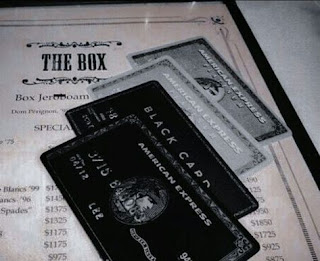Swiping Through History
Credit cards are essential parts of our everyday lives that make our transactions almost mindless. This article discusses the prevalence of credit cards in today's society.
- In a 2021 survey it was found that 84% of U.S. adults have a credit card.
- 73% of Americans have a credit card by age 25.
- In 2022 it was reported that there are over 518 Million Credit card user accounts.
It is hard to think of a time when these powerful pieces of plastic didn't exist. In this blog post, credit cards are going to be explored through the lens of the Diffusion Theory.
https://www.forbes.com/advisor/credit-cards/credit-card-statistics/
Early Adaptors:
The concept of credit cards dates back to ancient civilizations with their concepts of barter systems, but the concept of the modern credit card used today did not revolutionize until the 20th century. The first bank to issue a credit card was the Diner's Club in 1950, pioneered by a New York businessman, named Frank McNamara. Frank McNamara envisioned a future where restaurants across New York would honor a single card for transactions.
Diner's Club was designed initially for travel and entertainment expenses.
This card, allowed cardholders to pay bills at participating establishments, and receive the charges in a bill at a later date. This new innovation allowed users to make purchases without having the inconvenience of carrying cash.
McNamara charged merchants a 7% fee per transaction, but assured these merchants that consumers would spend more in return. The convince of paying one bill at the end of the month for all purchases led to widespread popularity. By the first anniversary of this card, there were 42,000 users.
Early Majority:
Then, in 1958, American Express introduced the BankAmericard, which was the first true credit card. This card offered revolving credit, which allowed users to carry a balance from month to month resulting in interest. Other banks adopted this idea, and by the 1970's there were many credit card options available.
Following the launch of the BankAmericard in California, almost a million BankAmericards were in circulation by the end of 1960. Just six years later, Bank of America began licensing it as the first general-purpose credit card across the country. By June 1966, 61,000 merchants across 42 states accepted the BankAmericard.
Late Majority:
In the 70's users would choose cards based on the bank association because certain banks worked with certain venders, but as the 80's approached networks achieved widespread merchant acceptance which shifted their strategy in choosing a card. Credit card companies started adding new perks to entice customers, which introduced card specific features.
In 1986 Sears introduced the Discover Card which began the concept of cash back purchases. This new perk triggered a surge in competition among companies to offer the best incentives for users including: sign-up bonuses, frequent flier miles, and low-interest periods.
Laggards:
Despite the convince and widespread usage, there remains a group of people that have yet to adopt the concept of credit cards. According to a study conducted in 2021, about 16% of adults in the United States, did not possess a credit card. These people might be influenced by a range of factors including a preference to a different form of payment, concerns about privacy and security, or a lack of trust in their financial habits.
Laggards resist opening a credit card because of a mistrust in the modern concept of credit. Because of this mistrust they find comfort in traditional payment methods, to avoid accumulating debt and compromising their financial security.
Negative Consequences:
Despite their connivence and benefits, there are some downsides to credit cards. The convince and ease that credit cards bring can lead to debt accumulation. There are also privacy and security issues associated with modern day credit cards.












Comments
Post a Comment